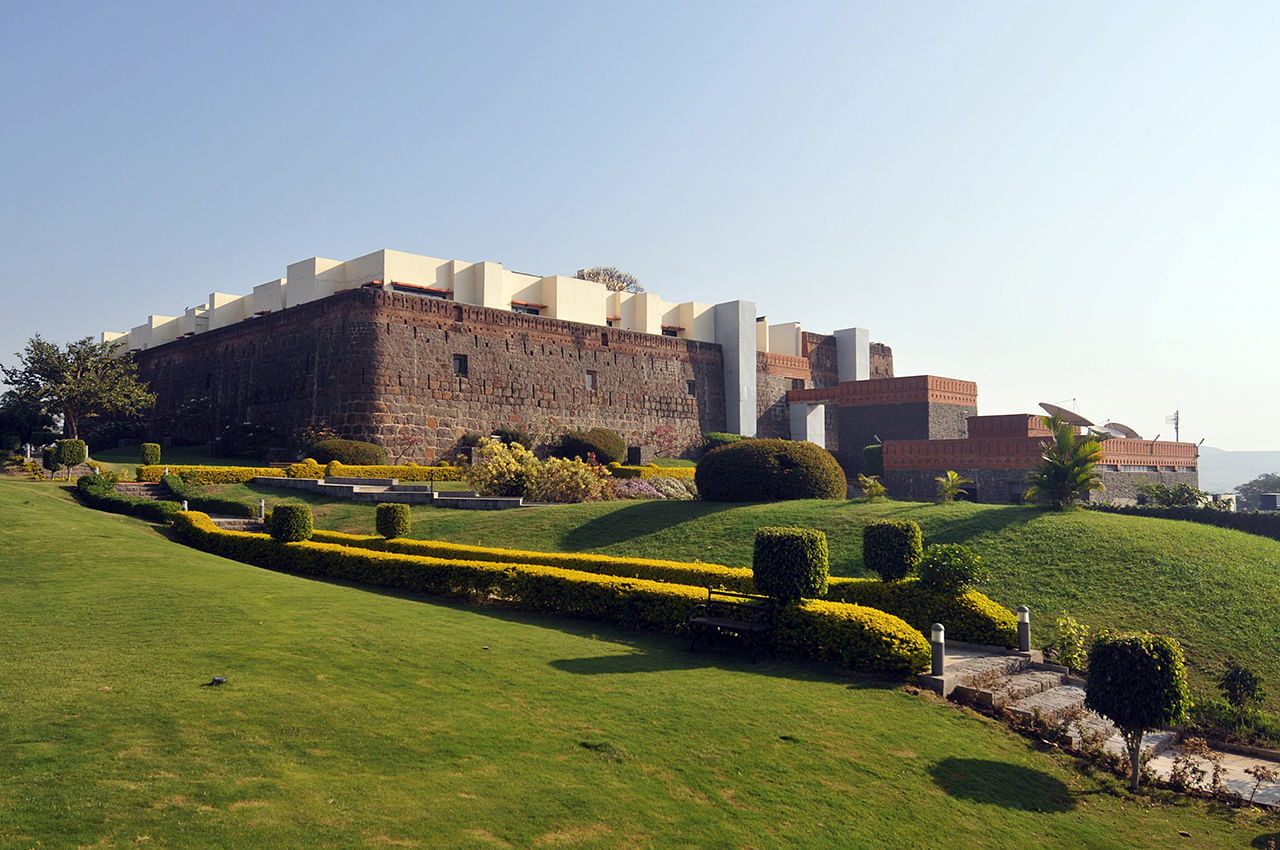Want to experience a true heritage holiday and walk down the historical lane that’s around 300 years old? Then head to the Jadhavgadh Fort that lies sprawling over a hillock in the Maratha landscape in Jadhavwadi, on Hadapsar Saswad Road, just an hour’s drive from Pune.
India is the land of kings and forts. At Jadhavgadh, you can relive the story of Pilaji Jadhavrao, who built the fort and lived in it along with his queen and an entourage of soldiers.
Who was Pilaji Jadhavrao? He was one of the few trusted and able generals selected by King Sahu, grandson of Chakravartin Ashoka, to look after the vast district of Satara that fell under the Maratha rule.
Those were the days when sieges were at an all-time high, and the fort was crafted to keep enemies at bay; it now stands almost untouched as it did centuries ago. Thanks to the renovation works taken by hotelier Vittal Kamath, it now has modern amenities, yet scrupulously retains its old-world charm.
Be ready to be welcomed by the blowing of a trumpet and the beating of dholaks by turban-clad doormen, and to be greeted by ladies in traditional nine-yard saris and sporting the trademark nose ring.
Climb away
The steps leading to the fort are rugged and high as they were once used to usher in horses and elephants as well. The wooden doors of the fort are over 20-feet tall and are said to have weighed a few kilos each that it required four hefty men to operate them. The same doors, a bit worn out, still stand tall.
In the olden days, there was a customary closing of the doors as the sun settled, a tradition which is carried on even now.
The reception area of the fort has a low ceiling supported by stone columns. This opens into a courtyard which houses the deluxe rooms, once the quarters that housed soldiers. The jagged stone steps then wind up at right angles to the room of the queen, and from there, the steps to the king’s room that takes you one floor above is again at right angles. The rooms allow only one person at a time as the doors are small, no more than four feet high. One must bow down to enter. Remember this was the doorway to the seat of power.
The king and the queen’s rooms have small rectangular windows at the level of the floor, the original source for light and ventilation. Some of them have now been sealed to facilitate air conditioning. The ceiling is low with carved teak wood pillars; the artefacts in the rooms spell the life then and you feel truly transported in time.
The balcony in the king’s room is artistically made and gives a panoramic view of the valley around.
It was here, in the night, that we decided to partake in the wine. We were in the company of many night birds and one even entered our room.
Our frantic calls to the reception brought over the pest-control. But the bird, by then, had quietly left.
It is said that the queen’s room led to a pond in the backyard, a pond that could store gallons of water that could keep the entire garrison going for six months in case of a siege. The pond is now converted into a swimming pool; the neem tree that stands in the centre of the swimming pool is the same that stood in the pond then!
The other attraction is the number of inbuilt tunnels and dungeons — some to store grains, some to put away prisoners, and one said to be an escape route, connected to another fort in the vicinity.
If you are young and agile, you can step in, inspect the dark chambers and pick up a wine bottle of your choice, for that is where the wine cellar of the present-day fort rests.
The sprawling ground around the fort has a well-manicured lawn, at one end of which lies the deity of the fort, Lord Ganesha. For the adventurous, there are royal tents and neem cottages that are spread out on the lawns at different wings of the fort. Aai is the museum that houses the collection of artefacts belonging to Vittal Kamath. It comprises intricately carved utensils and decorated nut-crackers, paan holders, jewellery boxes, combs, mirror etc.
Traditional grub
Now, the most important aspect… the food. The fort has two restaurants, one at the foot of the hill called Pyatha; it serves traditional Marathi food and other delicacies. One of the main attractions here is a live roti/bhakri counter, managed by local women, which gives an ethnic touch to the piping-hot rotis. Chajja is the restaurant at the mid-landing of the fort and serves a range of traditional and continental delicacies. It has an extended canopy or jharokha where, it is said, the king and the queen ate or whispered sweet nothings while on the swing.
There are other activities that can keep you engaged here. A bullock-cart ride, an audio tour of the fort, early-morning treks, learning to play the tutturi, the Maharashtrian trumpet, or painting statuettes made of plaster of Paris.
